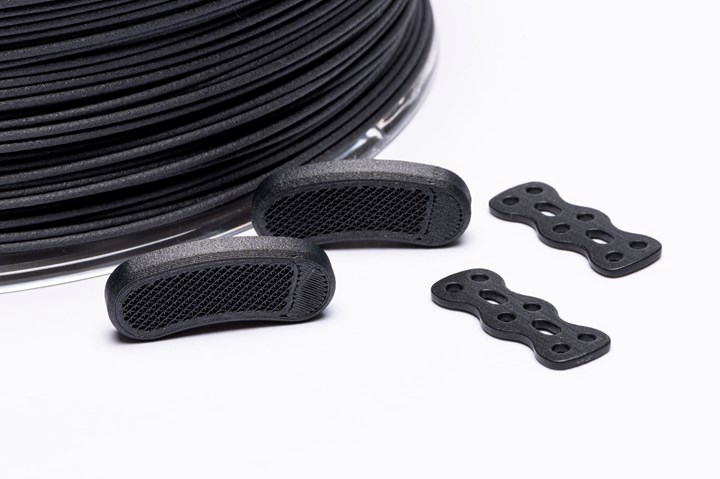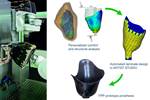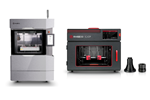Evonik showcases chopped carbon fiber-reinforced PEEK filament
Vestakeep is available at two levels of carbon fiber content and appropriate for long-term surgical implants.

Carbon fiber-reinforced PEEK filament for printing long-term surgical implants. Photo Credit: Evonik
Evonik (Marl, Germany) is introducing a new chopped carbon fiber-reinforced polyetheretherketone (PEEK) filament, for use in 3D-printed medical implants. It can be processed in common extrusion-based 3D printing technologies such as fused filament fabrication (FFF).
Vestakeep iC4612 and Vestakeep iC4620 feature 12% and 20% carbon fiber content, respectively. The two grades offer a choice of material depending on the required strength and flex properties of 3D-printed implants such as bone plates and other reconstructive prostheses.
Carbon fibers add strength to the filament products, while PEEK adds ductility. Other benefits, according to Evonik, include the ability to define the alignment of carbon fibers during the printing process, biocompatibility and avoiding X-ray artifacts.
With a diameter of 1.75 mm, Vestakeep iC4612 and iC4620 are supplied on 500g and 1,000g spools that can be used directly in standard FFF/FDM 3D printers for PEEK materials.
“No other application field showcases more the advantages of 3D printing, such as individualization or design freedom, than medical technology,” says Marc Knebel, head of medical systems at Evonik. “In trauma applications, for instance, 3D-printed solutions offer an enormous time advantage over traditionally manufactured medical devices. It is conceivable that patient-specific solutions can be manufactured within 2 or 3 days, significantly improving the recovery phase.”
Related Content
-
3D-printed CFRP tools for serial production of composite landing flaps
GKN Aerospace Munich and CEAD develop printed tooling with short and continuous fiber that reduces cost and increases sustainability for composites production.
-
Revisiting the OceanGate Titan disaster
A year has passed since the tragic loss of the Titan submersible that claimed the lives of five people. What lessons have been learned from the disaster?
-
Composites manufacturing for general aviation aircraft
General aviation, certified and experimental, has increasingly embraced composites over the decades, a path further driven by leveraged innovation in materials and processes and the evolving AAM market.
















